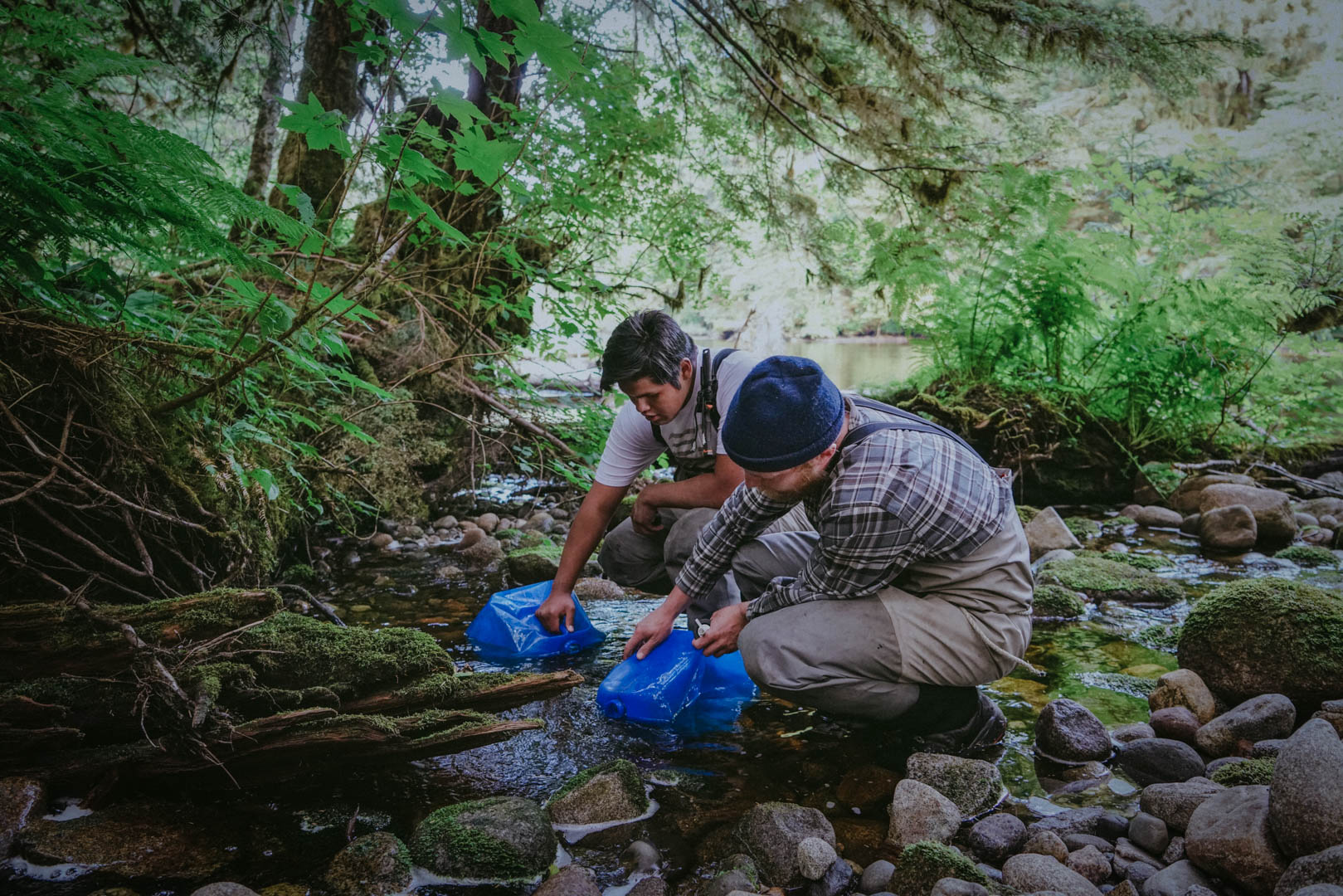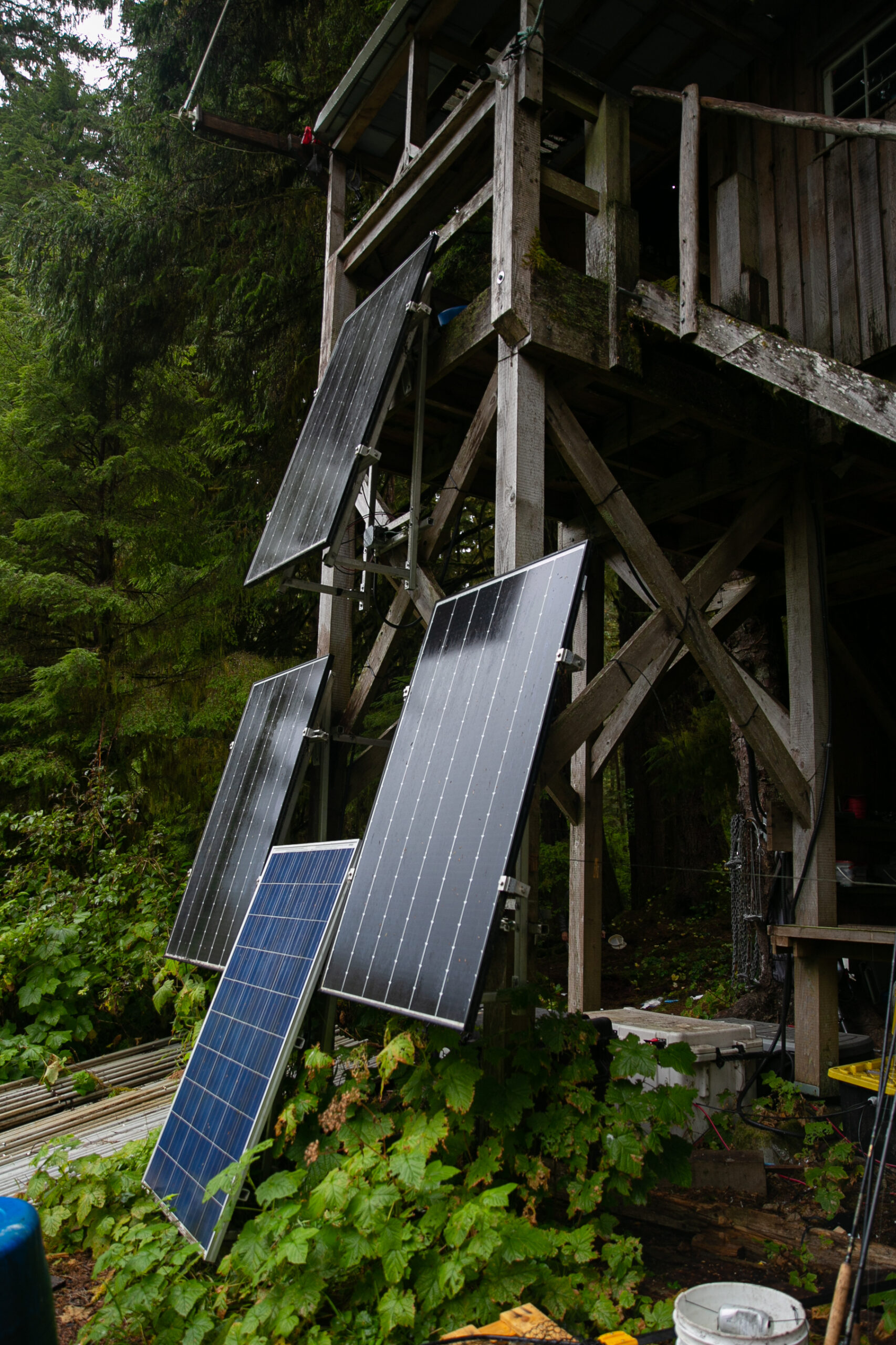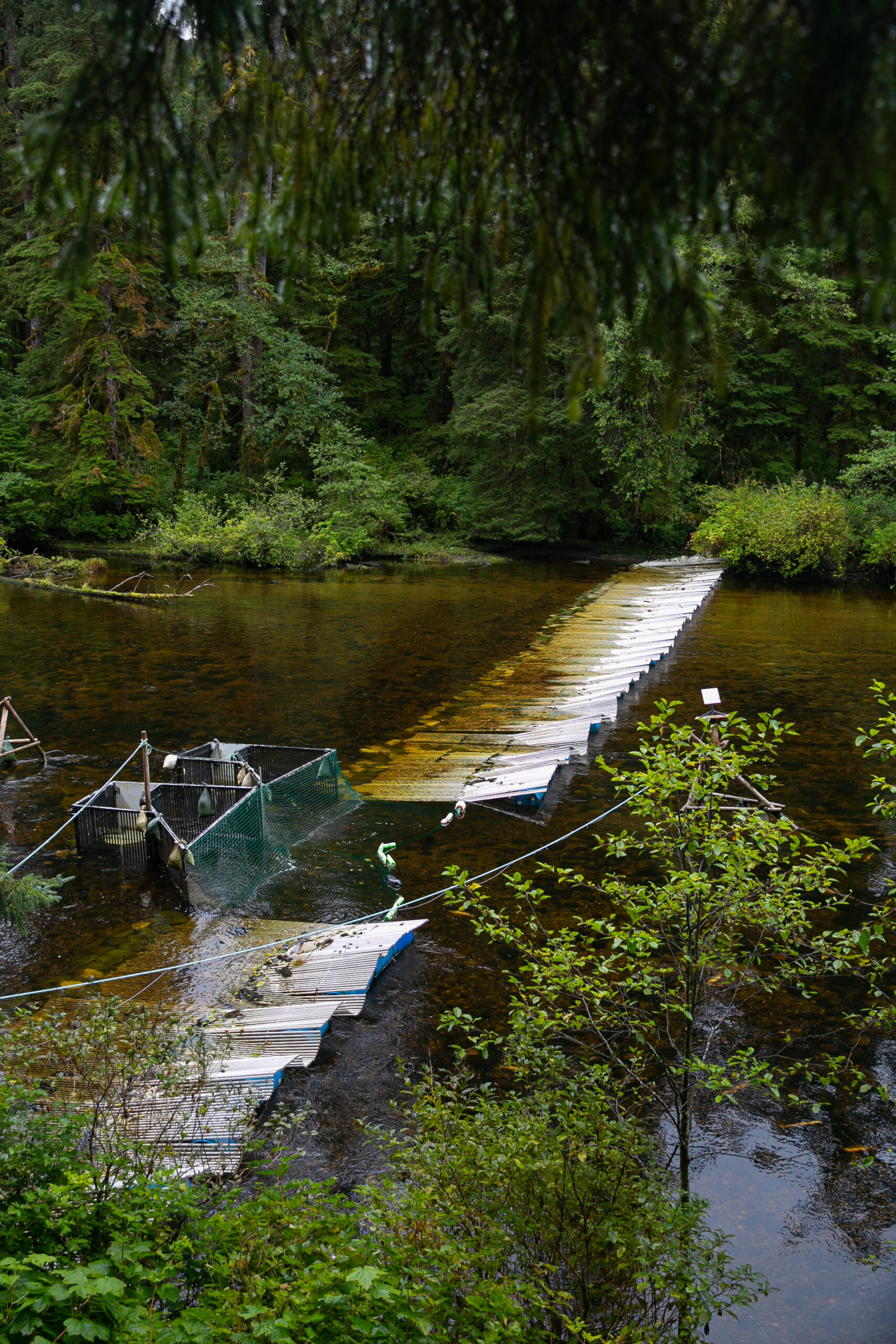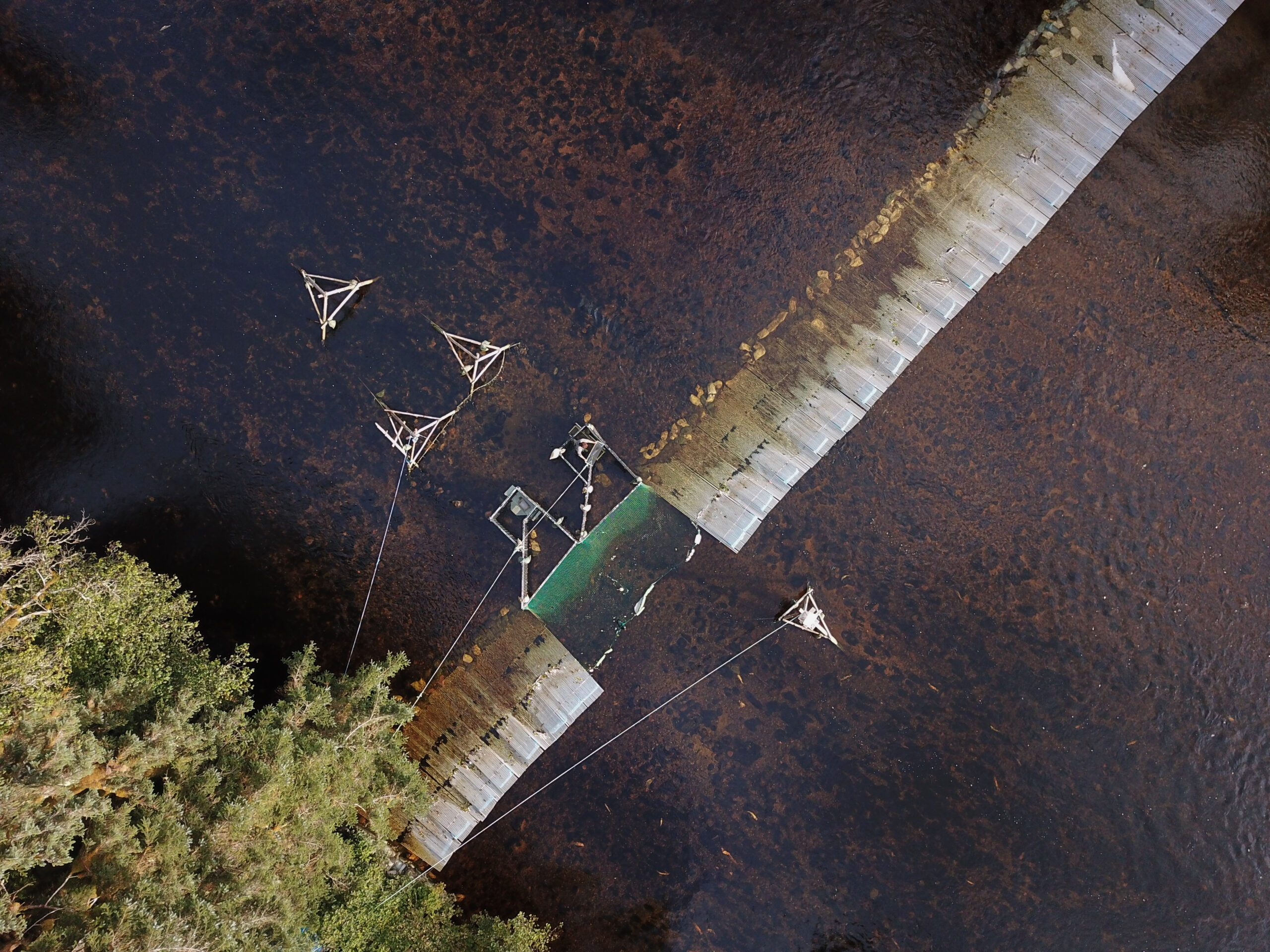
The Right Honourable Mary Simon aims to be an Arctic fox
Canada’s first-ever Indigenous governor general doesn’t play favourites among our majestic natural wonders, but she...
The Heiltsuk Nation was able to confidently harvest sockeye salmon for the first time in years, distributing around 500 fish within the community — in large part due to a new monitoring system that relies on artificial intelligence, or AI.
The remote community on the central coast of B.C. has been abstaining from fishing sockeye because they didn’t know exactly how the population was doing. They could tell it had declined, like many salmon populations across the province have in recent decades, but they weren’t sure by how much. That’s because while salmon have plummeted, so has the federal budget for salmon monitoring, leaving First Nations to rely on delayed or incomplete data. So Heiltsuk took matters into their own hands.
Last summer, Heiltsuk fully implemented a new AI counting system at their fish weir on the Koeye River, in the Great Bear Rainforest. It can count exactly how many salmon are passing through 24 hours a day, and even identify specific species. The nation was able to use this data to forecast how many sockeye would return, and then they were confident in the decision to harvest, according to William Housty, associate director of the Heiltsuk Integrated Resource Management Department. Their harvest of about 500 salmon allowed them to distribute three sockeye to each Heiltsuk household with Elders and two sockeye for other homes, Housty explained.
It’s nowhere near historic levels of harvest, but families were still jubilant.
“In this day and age, when the sockeye salmon stocks in general are so depleted, it’s up to about $20 a sockeye, and it’s not local sockeye. I didn’t realize it, until we got to the point of distribution, where people were so darn excited to get three sockeye. You’d think they’d won the lottery,” Housty said.
About a dozen First Nations are working with scientists to train AI models to recognize how many salmon are returning in real-time. It could revolutionize how First Nations fish and steward salmon, offering critical information for managing populations struggling from habitat loss and warming temperatures.
Most often, communities don’t know exactly how many salmon are passing through a waterway at any given time. Fisheries are harvesting based on preseason forecasts from Fisheries and Oceans Canada, commonly called DFO, or without any information about abundance at all. Data analysis is completed weeks or months after the fishing season. In waterways where people manually count fish (for example, at fish-counting fences), the work is labour-intensive, expensive and slow. Decades of budget cuts at DFO have greatly reduced the number of streams being monitored, even though wild salmon populations have been on the decline. All of these factors make it harder to access up-to-date information for salmon management.
By combining AI with traditional First Nations technologies, communities hope to learn exactly how many salmon are making it back to spawn. This information will give First Nations reliable, accurate data to decide how many salmon they can safely harvest each season, as well as when they need to hold off and let more salmon spawn to sustain future generations.
“Now that we’re using this technology combined with our traditional weir methods, the amount of accuracy is amazing,” Housty said.
Will Atlas, a salmon watershed scientist at the Wild Salmon Center, has been working with Heiltsuk and other First Nations for years, as well as partners at Simon Fraser Computing Sciences and the Pacific Salmon Foundation, to get AI monitoring projects off the ground. When these programs are fully up and running, these First Nations will have more accurate and timely data than DFO, Atlas said.
“Having high quality, in-season data should put the nations in the driver’s seat,” he said.
“Knowledge is power when it comes to fisheries decision-making. For the nations to have these tools at their disposal — I think it’s a big game-changer.”
Heiltsuk ran a pilot in 2022, but 2023 was the first time the program was operating the whole season. Housty said he is able to sit at his desk in Bella Bella and watch the sockeye salmon swim through while the program produces real-time data.
The technology works by outfitting fish passage boxes with high definition cameras. The cameras are solar-powered and the results are communicated by satellite. Led by Atlas and a team of computer scientists at Simon Fraser University, they developed and trained the technology to perform object detection and multi-object tracking to count salmon and differentiate salmon species — a tool they’re calling SalmonVision.

Atlas and a team of co-authors published their results from working with the Gitanyow Fisheries Authority and Skeena Fisheries Commission in September. For this project, they reported their top performing model achieved a “mean average precision” of 67.6 per cent, with species-specific scores of over 90 per cent for coho and over 80 per cent for sockeye. They achieved these results with a combined dataset from weirs on the Kitwanga River and Bear River.
Janvier Doire, one of the study’s co-authors who works as a fish biologist for the Skeena Fisheries Commission, pointed out how empowering it is that “it’s not DFO coming in with their data.”
The data is “owned and produced” by First Nations, he said. “It gives them autonomy and independence.”
The upfront cost is $50,000 for the equipment and installation — but the longer the system is running, the less expensive it becomes per year, according to Doire. In addition to getting the upfront cost, the training itself takes a while and installation in a remote area can be challenging and expensive.
“We’ve been learning on the fly, we’ve been failing, we’ve been trying again, and I think we’re finally to the point where we really know what it takes to get a video system built and installed and reliable,” Atlas said.
The Heiltsuk Nation plans to generate a baseline of data to get a clearer picture of the state of salmon coming through its weir in the Koeye River, but the nation will also contribute to a larger effort to understand fish populations.
Atlas has long focused his efforts on advocating for in-river fisheries, which encapsulates a number of traditional First Nations fishing techniques like weirs, fish traps and fish wheels. In-river fisheries target specific populations and First Nations fishers are able to harvest according to how many fish they know have returned to spawn. This is a more selective approach than marine fisheries, which intercept many populations in the ocean and harvest before knowing how many fish will return to spawn.
This slew of AI pilot projects were partly funded by grants to the Pacific Salmon Foundation from the British Columbia Salmon Restoration and Innovation Fund (which is jointly funded by the provincial and federal governments) and the RBC Tech for Nature program. The Pacific Salmon Foundation is another partner in this endeavor. Katrina Connors, director of the foundation’s salmon watersheds program, said in addition to using AI to improve in-season estimates of salmon, they similarly want to improve in-season monitoring of habitat.
The foundation is working with First Nations to use drones to identify cold areas in streams that can act as refuge for salmon, as well as measuring stream temperature and flow.
Connors said the partners hope to see these projects expand to more First Nations, bolstering Traditional Knowledge and infrastructure that’s already in place with machine learning technology that can be tailored and adapted to different locations.
“This [pilot project] was really proof of concept,” she said. “The next phase, how can you scale this up?”


Most often, the salmon populations that are well-monitored are commercially important populations, Connors explained. She believes this shift to using new technologies like drones and AI can allow communities to bolster their own local, small-scale monitoring.
“That is huge because there are major data gaps for salmon throughout B.C.,” she said.
According to Pacific Salmon Foundation data, the number of streams on the north and central coast of B.C. that are routinely monitored has declined by 50 per cent since 2006.
Many salmon populations First Nations have relied on for generations are a fraction of the size they once were, due to the impacts of industrialization and colonization. Other culturally important species, seen more as non-human relatives with specific relationships to different nations, have declined so much they can no longer be a reliable food source, from caribou in the interior to clams on the coast.
For salmon, there is “no one factor that’s to blame” for widespread decline, Doire explained.
“Some rivers have been devastated by logging, roads, the building of cities, agriculture and dams,” he said. Meanwhile, ocean temperature has increased, which has caused a decline in the quality of prey, and salmon hatcheries are increasing the number of young salmon in the ocean. The result, according to Doire, is “increasing competition for a limited amount of food.”
Using this monitoring technology will increase communities’ “horsepower” responding to these challenges, Christina Service, science lead at Kitasoo Xai’xais Stewardship Authority, said. She said the AI program in the Kwakwa River weir hasn’t been fully trained yet, and the model has to be finessed for variables like water colour and other factors. This year, they will have to manually review the footage and further train the model until they have reliable real-time data.
The Kwakwa River is one of the waterways that has been neglected in terms of monitoring since it’s not home to a commercially important run, Service said.
“Where we built the weir in Kwakwa is one of the most important food fisheries for the community’s sockeye fishery, and is disproportionately valuable on a community scale — but not at all a concern on a coast-wide [Fisheries and Oceans Canada] scale,” she explained.
The river is a “breadbasket” for the community and central to food security, she said. The weir is part of a 3,350-hectare marine protected area encompassing Gitdisdzu Lugyeks (Kitasu Bay) that Kitasoo Xai’xais unilaterally declared in June 2022 — one among a slew of Indigenous Protected and Conserved Areas (IPCAs) First Nations have been declaring around the territories known as British Columbia in recent years.
“The community wants to manage their own resources,” she said.

The project leaders are excited at the possibilities of utilizing this technology to transform salmon monitoring, though Housty has still met some people who feel concerns around AI. Housty said one person asked him about the ethics of using AI this way, and he responded he doesn’t see anything unethical because they aren’t relying on the technology to make decisions.
“We’re utilizing the collected data for us. To us, that’s a big difference. We’re collecting the data in the stream daily, the data is uploaded onto the website every day, we can go and look and see how many sockeye passed the fence, and we can make decisions based on that,” he said. “It’s not like the technology is saying ‘You need to do this, you need to do that.’ ”
He said the Heiltsuk have long focused on bringing together Western science and Heiltsuk technology, and this project is “a culmination of that.”
“If we can utilize this sort of technology to better manage sockeye salmon ourselves, it’s going to lead to long-term sustainability for salmon populations that is so desperately needed.”
Get the inside scoop on The Narwhal’s environment and climate reporting by signing up for our free newsletter. A $335 million funding commitment to fund...
Continue reading
Canada’s first-ever Indigenous governor general doesn’t play favourites among our majestic natural wonders, but she...

In Alberta, a massive open-pit coal mine near Jasper National Park is hoping to expand...

A trade war could help remake B.C.’s food system, but will family farmers be left...
